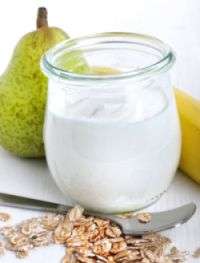Study of interaction between mouth movements and perceptions

Anyone who takes a mouthful of food notices straightaway how solid or liquid it is. If the teeth and tongue then go to work on this mouthful, you will notice attributes such as whether the food is fatty or creamy or how quickly it melts. There are also food properties that you only really notice after the food has been swallowed; that is when the aromas find their way to the nose. In other words, you perceive different sensations in various stages of the chewing process.
The manner of chewing and the movement of the tongue both influence food sensations, but the opposite is also true. René de Wijk and Anke Janssen, researchers at Wageningen UR Food & Biobased Research, and the British nutrition scientist Jon Prinz, from the Top Institute Food and Nutrition, have together summarised the results of a large number of studies on the role of chewing behaviour. The result is the scientific article ‘Oral movements and the perception of semi-solid food’ in which they have combined the results from sensory, physiological and instrumental research.
The scientists have mainly looked at semi-liquid foods like yoghurt. With these, chewing behaviour does not last as long as with solid foods, but time is still required to allow the mouth to get used to the food temperature or to dilute the food with saliva.
Mouth movements influence perception
In one of the experiments, trained panelists were asked to take semi-liquid food in various ways: swallow directly, spread it over the palate in a figure of eight and then swallow it, etc. In all cases, the food remained in the mouth for 5 seconds, so time could not have been a determining factor. Conclusion: the more complex the mouth movements, the more you perceive. However, the most effective manner of perceiving sensations turned out to be the natural manner; when the panelists swallowed the food without any instructions.
In another, comparable, study the perception of aromas was investigated during various types of oral movement. More aromas were perceived during chewing movements than when the tongue rubbed the food along the front teeth, because the passage from mouth to nose was freer.
The researchers were also curious about precisely how the food changed in the mouth under the influence of chewing and tongue movements. To study that, they asked the panelists to spit out the food after a certain time. Photos were then taken and analysed digitally to see how the food was broken down in the mouth.
Perception also influences mouth movements
Other studies have demonstrated that food structure also has an effect on mouth movements. French researchers have shown that people chew and suck milk pudding for a shorter period if it contains a higher concentration of the bitter substance, quinine, but in that case swallowing takes longer. Laboratory research in the Restaurant of the Future in Wageningen is employing sensors to look at which muscles are involved in eating various types of custard. A mouthful of very sweet custard causes, for example, other sorts of mouth movement than a less sweet type.



















